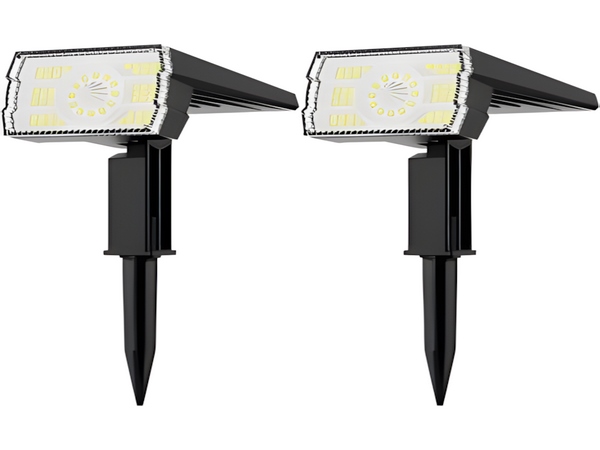

The lighting industry is developing rapidly, and there were many changes in 2015, including technological advancements, market restructuring, national strategies, and global trends. One could say it has experienced many ups and downs. As we enter 2016, what trends will the LED lighting industry embrace?
I. The “13th Five-Year Plan” will accelerate the development of LED lighting.
During the Paris Climate Conference, our country made promises to the world. The National Development and Reform Commission has designated LED as a key product for energy conservation and emission reduction in the “13th Five-Year Plan.” Compared to energy-saving lamps, LEDs can save 50% of energy, and when combined with control systems, can save up to 60%. There is significant potential for energy conservation. The methods of subsidy during government bidding processes, as well as eliminating corruption in subsidies, are worthy of exploration and study.
II. Cross-industry integration and “Internet Plus” will drive industry transformation and upgrading.
In the past, the lighting industry did not attract much attention. Now, e-commerce giants such as Xiaomi, JD.com, Alibaba, Tencent, and Huawei have begun to collaborate with us, all searching for opportunities. The unique advantage of lighting products is their omnipresence. Lighting will become a crucial medium for the internet; it’s how this medium is utilized that will enable cross-industry integration to play its role.
III. Mergers, acquisitions, and integration in the LED industry will intensify.
In the lighting era, the State-owned Assets Supervision and Administration Commission views the lighting industry as highly competitive. With the emergence of LEDs, state-owned enterprises like Feilo Acoustics, Guangsheng, and Sichuan Energy Investment Group have all entered the market. Publicly listed LED companies are leveraging capital platforms to accelerate industrial consolidation and mergers.
IV. Specialization will be the path for companies to survive and stand out.

LED is one of the few industries maintaining a high growth rate. LED lighting, in particular, excels in exports. Among over 20,000 enterprises, 80% are engaged in homogeneous products, making price a key factor in consumers’ choices. While companies strive for revenue without corresponding profit increases, those focused on niche markets maintain higher growth and profitability.
V. Chinese LEDs will further influence the world.
Chinese companies have begun acquiring international brands. While Chinese LED products are cheaper, their quality is comparable to that of international companies. Many established European and American lighting companies face challenges even greater than those our companies encounter. LEDs have provided an opportunity for Chinese lighting brands to enter the international market.
VI. Financial capital is entering the industry; listed companies have become dominant forces.
Before LEDs, there were only four to five listed companies, which could not significantly influence the industry. After the rise of LEDs, nearly 40 companies have gone public, with over 70 on the New Third Board. Publicly listed companies have become leading forces in the industry; either you go public yourself, or you partner with someone who is already listed. Without a public listing, companies will likely be in a passive position in future market competition.
VII. Smart lighting will become a new trend in the industry.
It is insufficient to only discuss intelligent control, as competing with giants like Huawei and Tencent is necessary. Smart lighting represents a new trend; however, if not managed well, it could attract many competitors. We must use intelligent control to create new lighting experiences.
LED smart lighting
provides numerous new experiences; it not only saves energy but can also adjust people’s emotions and help alleviate stress, contributing to urban management as well.
VIII. LED plus extended services will stimulate innovative business models.
Previously, the maintenance of lighting products was simply a matter of replacing bulbs. However, LED lighting systems integrate modules, power supplies, and control systems, necessitating a professional maintenance team. This could potentially foster extended services in the engineering field and create stable income. The PPP model, as part of future government services, will require lighting companies to continuously innovate in both products and services.
IX. LED applications have cost-performance advantages, but standards and specifications must be implemented.
Our country is certainly keeping pace with standards faster than any other country worldwide. While manufacturers ensure their products meet the standard regulations, designers demand specific specifications for selection. The LED lighting industry needs to establish corresponding specifications and selection dimensions.
X. LEDs are becoming a strategic tool for national energy conservation and emission reduction, and public science education is a significant task ahead.
Many products imitate traditional designs without leveraging the unique advantages of LEDs; this indicates our science education efforts are insufficient. Some streetlight management departments question the interchangeability of light sources, arguing that the incompatibility of source modules prevents their use. Each company has its unique design, making standardization for interchange challenging. If we do not standardize, will our LED streetlights become unusable? In reality, the LED streetlight chips are capable of lasting 8-10 years without issue.



